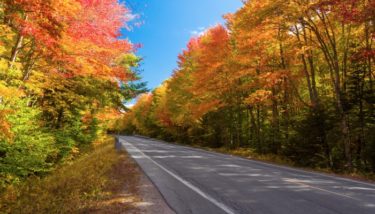By Sarah Downey | The Center Square
A state lawmaker hopes to restart discussions on New Hampshire’s land taxation rules, claiming they lack transparency.
It is estimated that nearly 75 percent of the land in New Hampshire qualifies for zero or discounted tax rates under Current Use law, which was enacted in the 1970s to allow farm or forest land, along with wetlands and unproductive land, to be taxed at below fair market value. Property owners with 10 or more acres left in their natural state are eligible.

New Hampshire road in the fall
Conservationists say the law encourages preservation of natural resources.
Others, including state Sen. Bob Giuda, R-Warren, say the system is outdated and may have unnecessarily hurt economic development. He hopes to propose a new study of Current Use rules when the Legislature reconvenes in January.
“We’re always looking for more local revenue, and we can’t just keep piling on the backs of residential homeowners,” Giuda told The Center Square.
Giuda believes the Current Use Advisory Board resists any disclosure of the formula used to develop the Current Use tax rates.
According to a story published in the New Hampshire Business Review, at the board’s June meeting, a former Lyme selectman asked how Current Use rates are calculated. The publication said that he was told “the formula is property of the Department of Revenue Administration and has been deemed proprietary information by the DRA and confirmed by the Attorney General’s Office and therefore is not available to the public.”
In rural areas with relatively low property values, the cost of conservation may unduly burden homeowners, Giuda said.
“We need to take a look at the program,” Giuda said. “Everybody needs to bend a little bit on this thing and make sure everybody is playing by the same set of rules across the state.”
“This is something that we have to evaluate in a state where property tax does the bulk of revenue raising,” he added.


